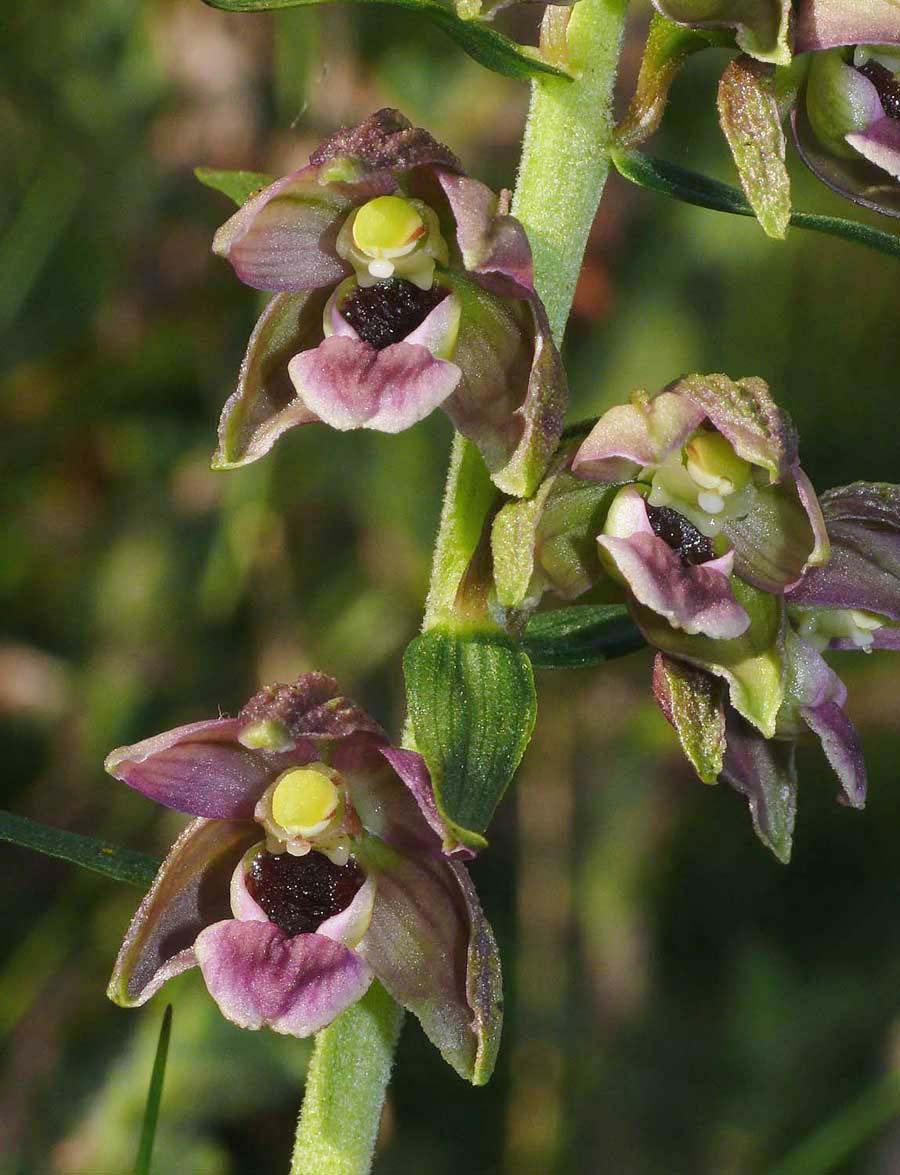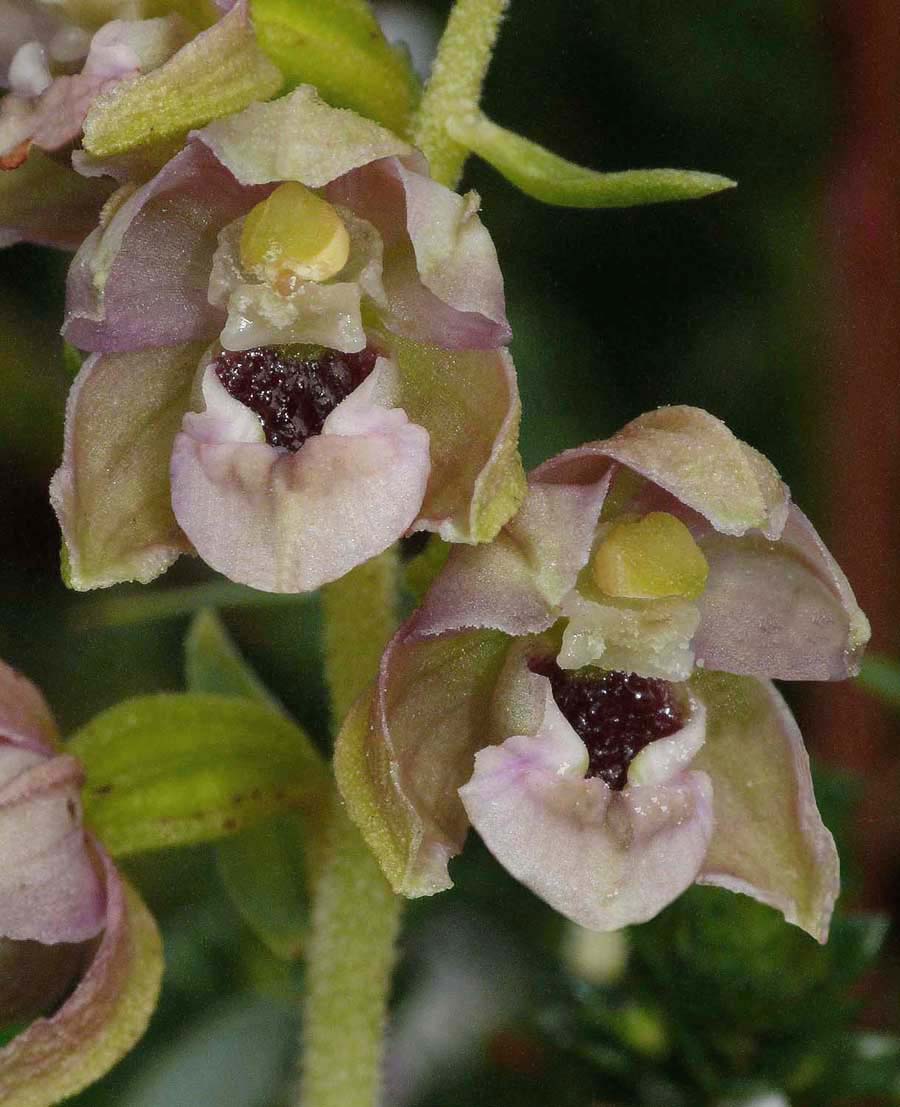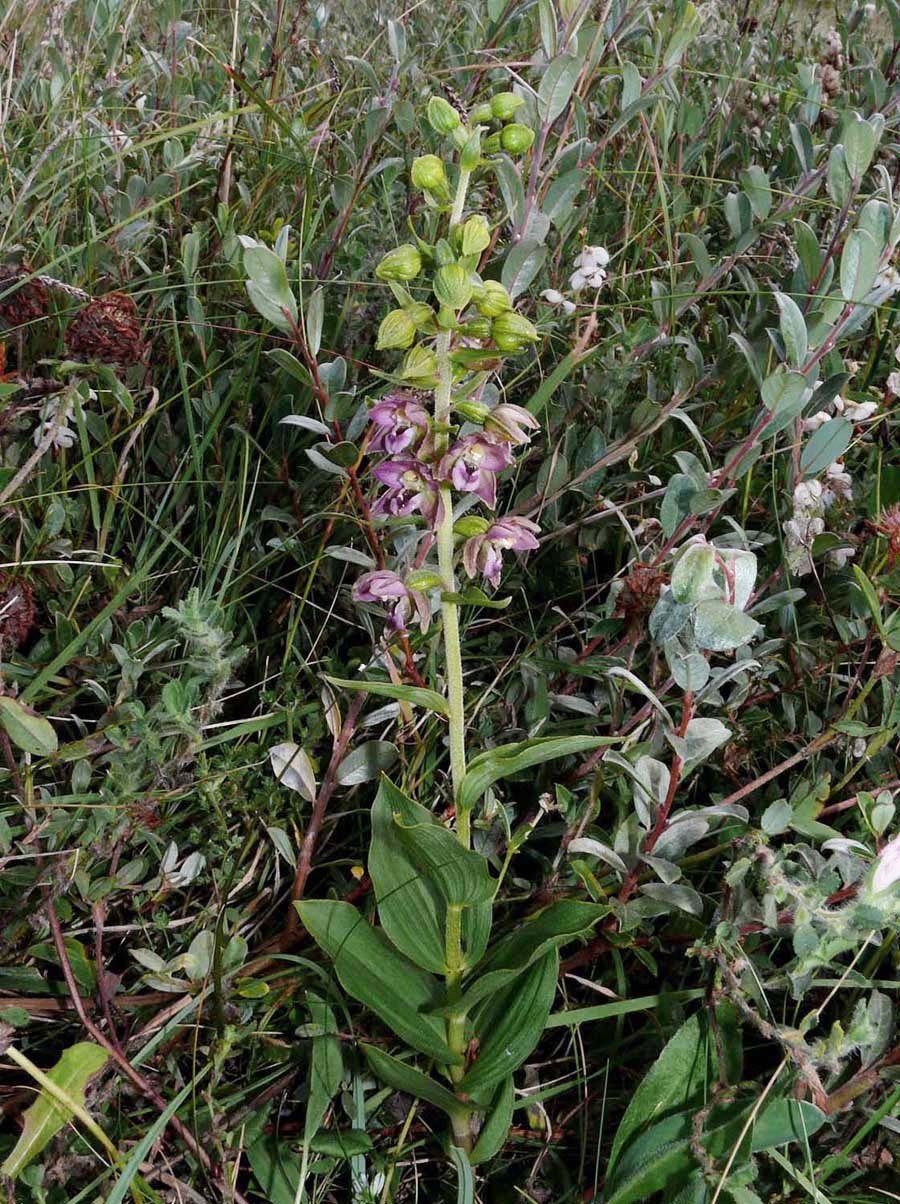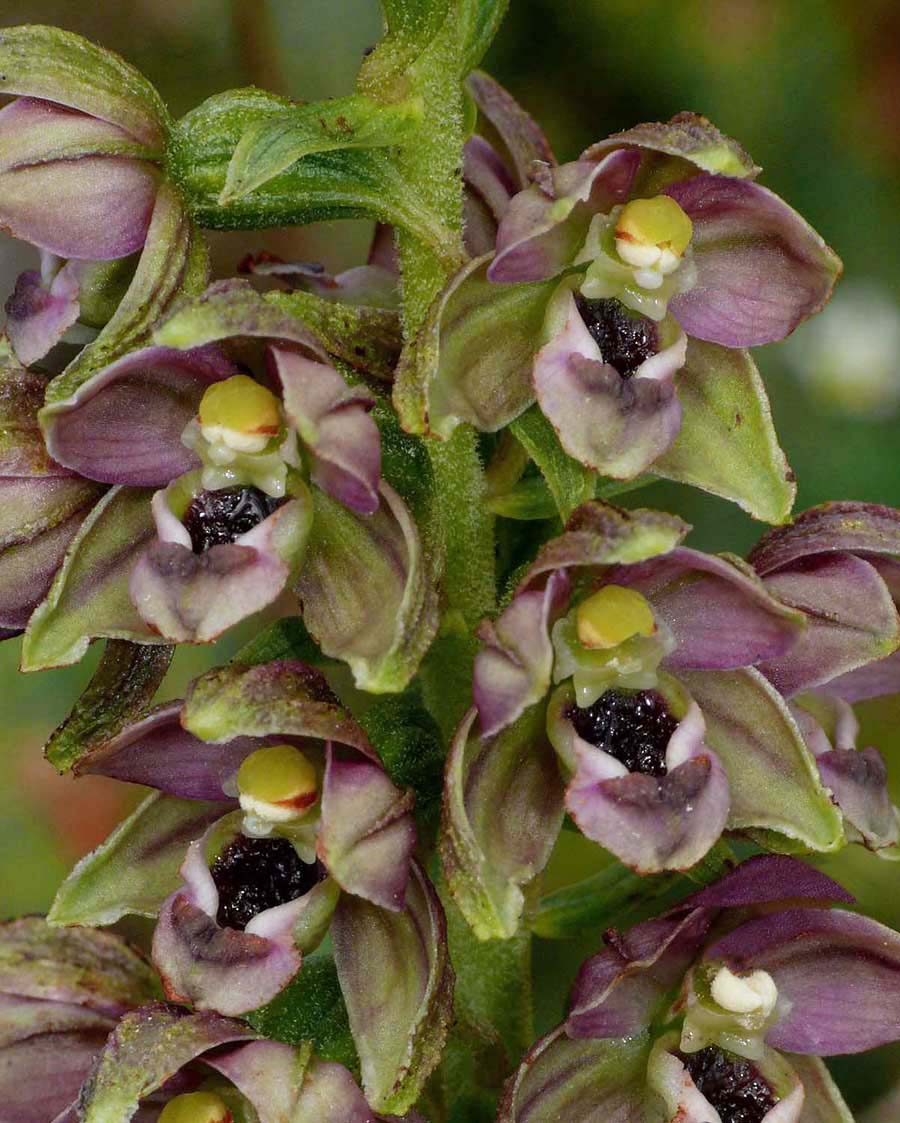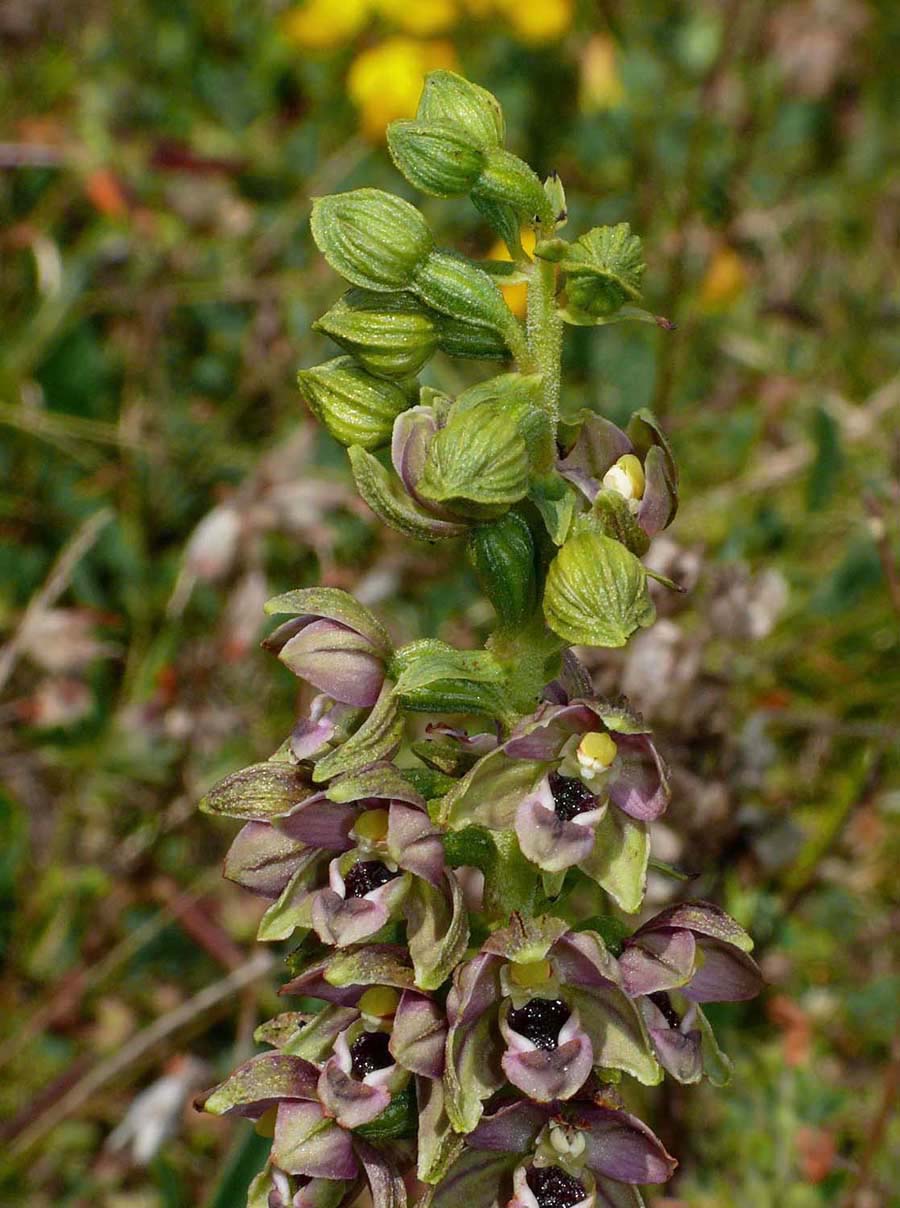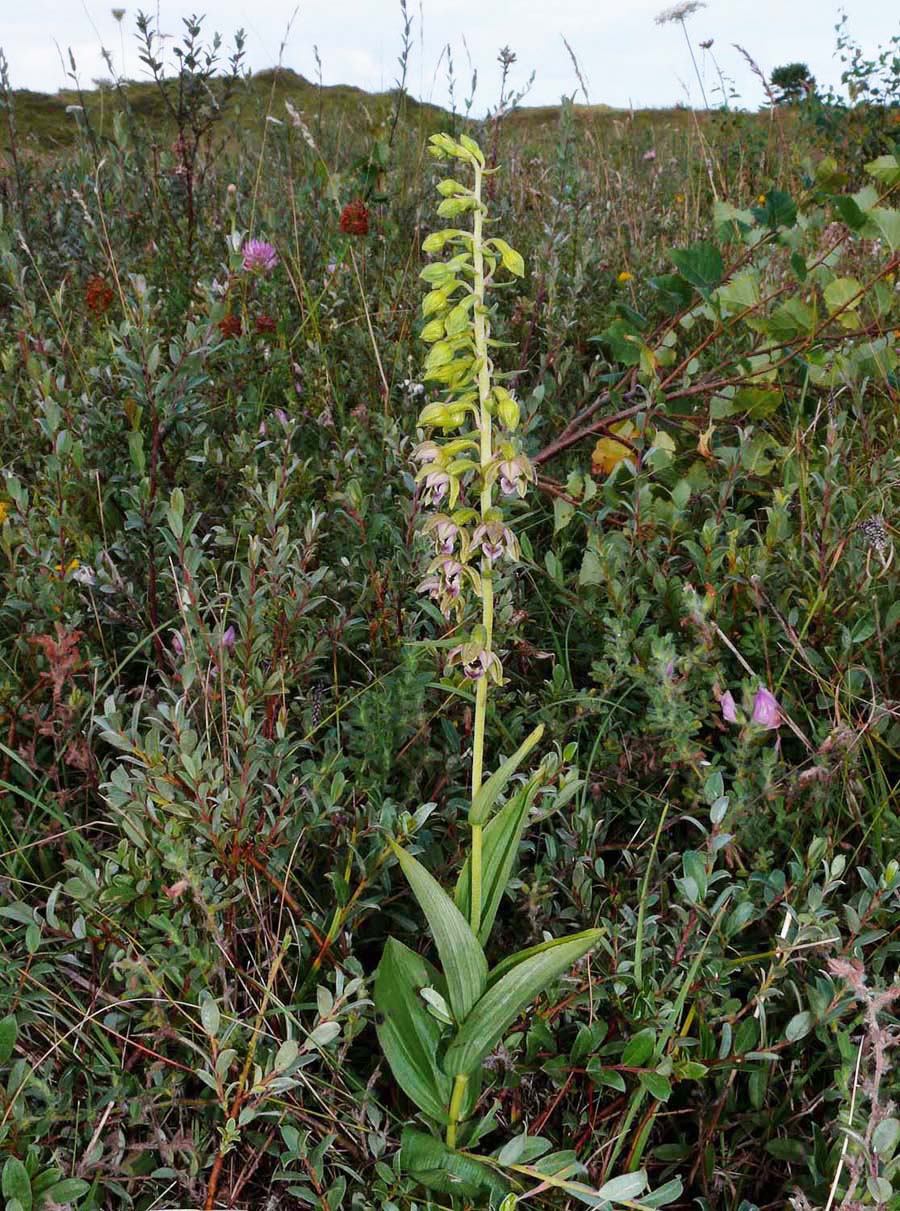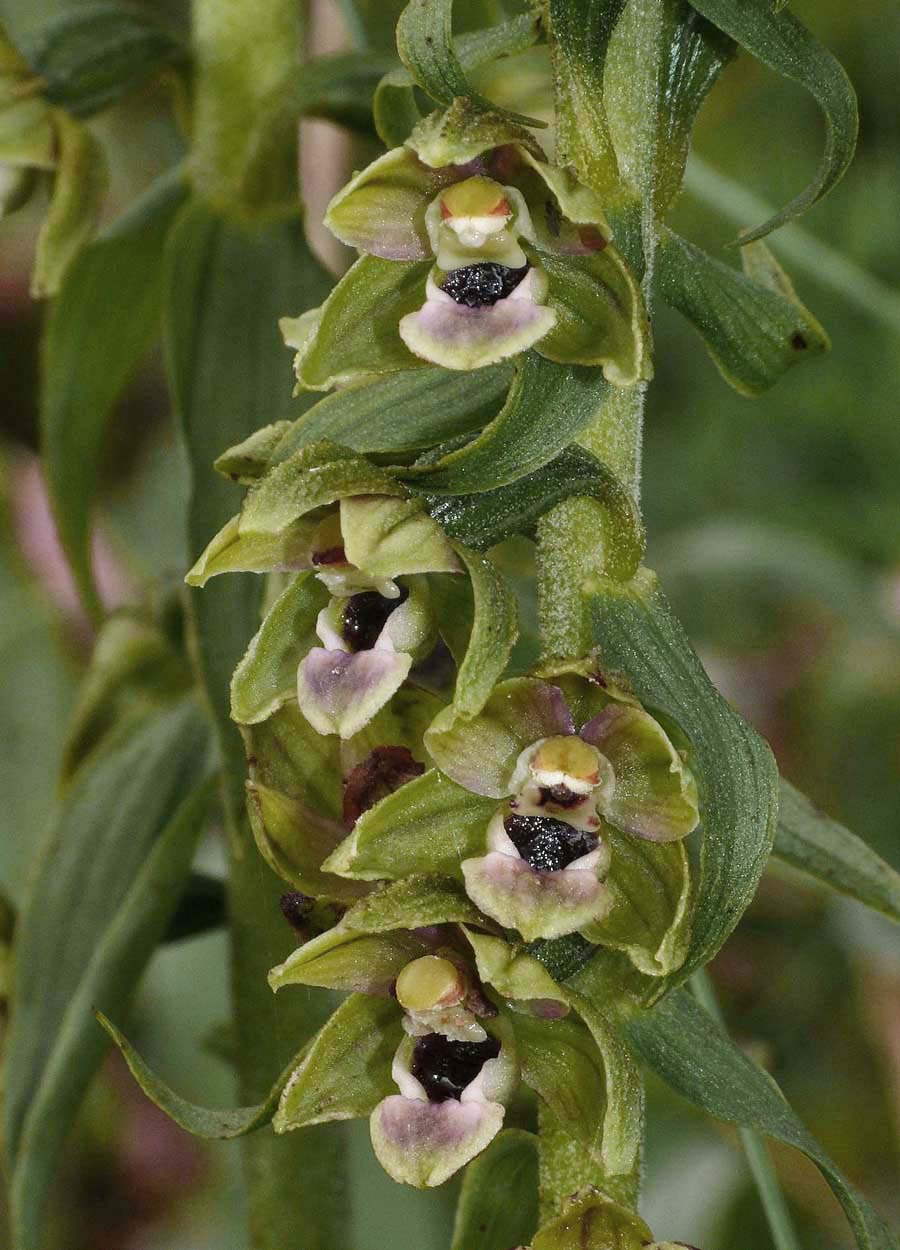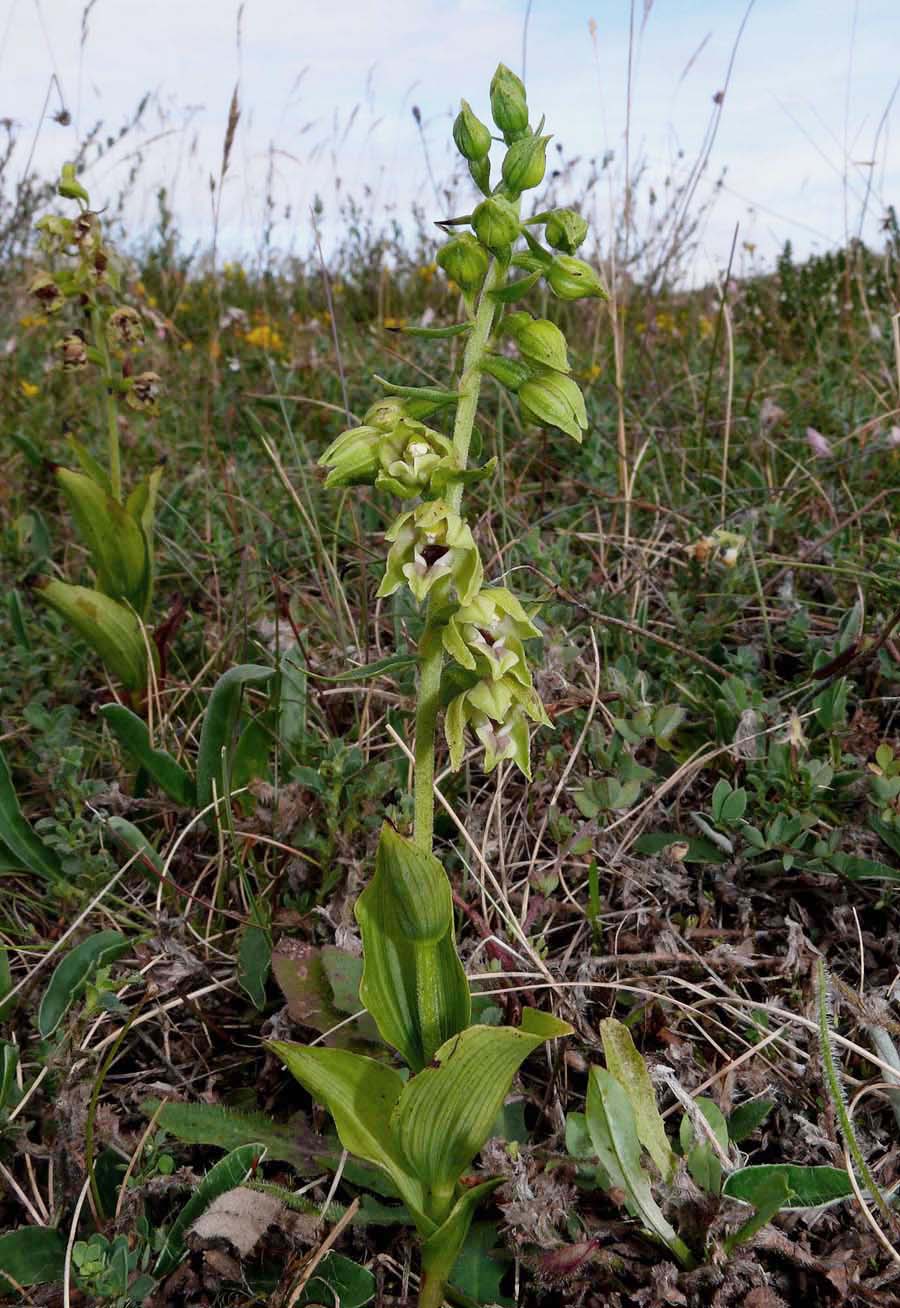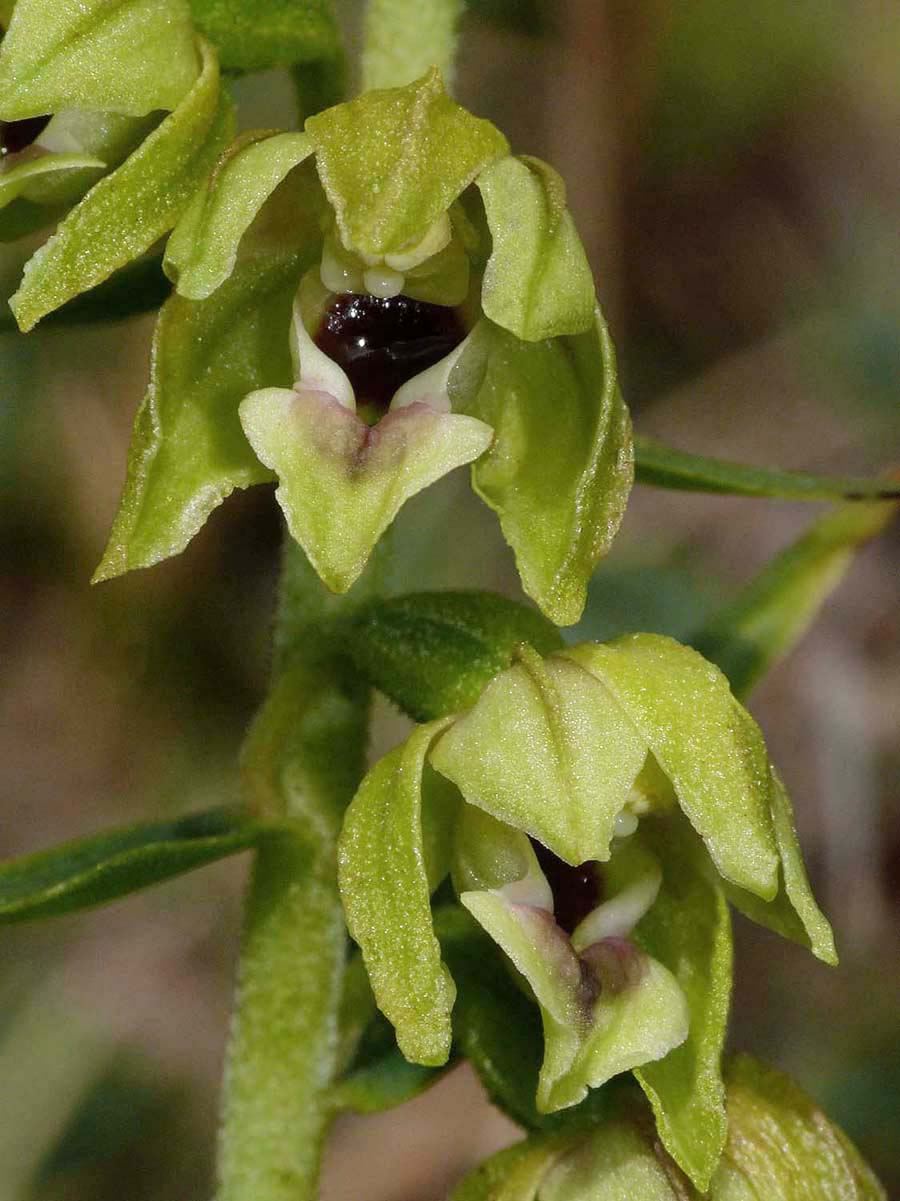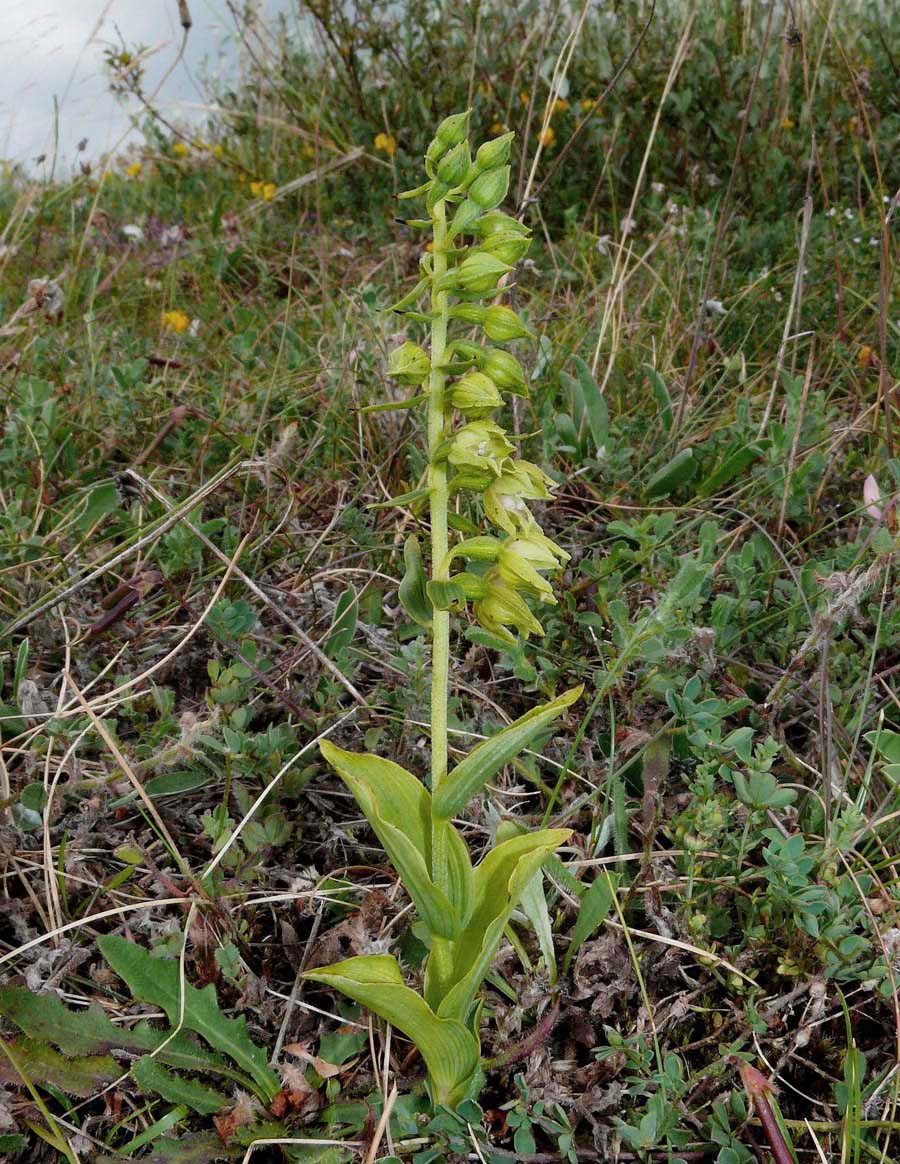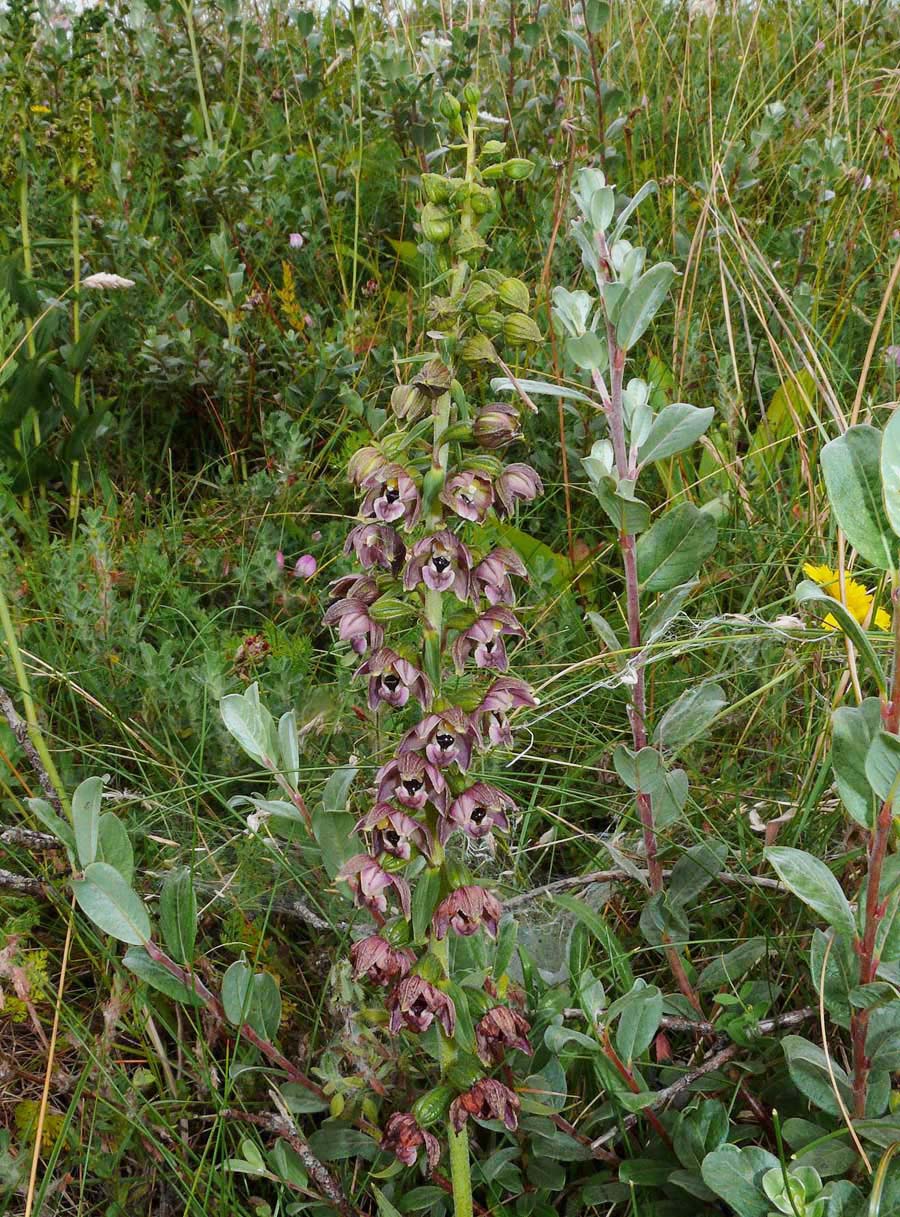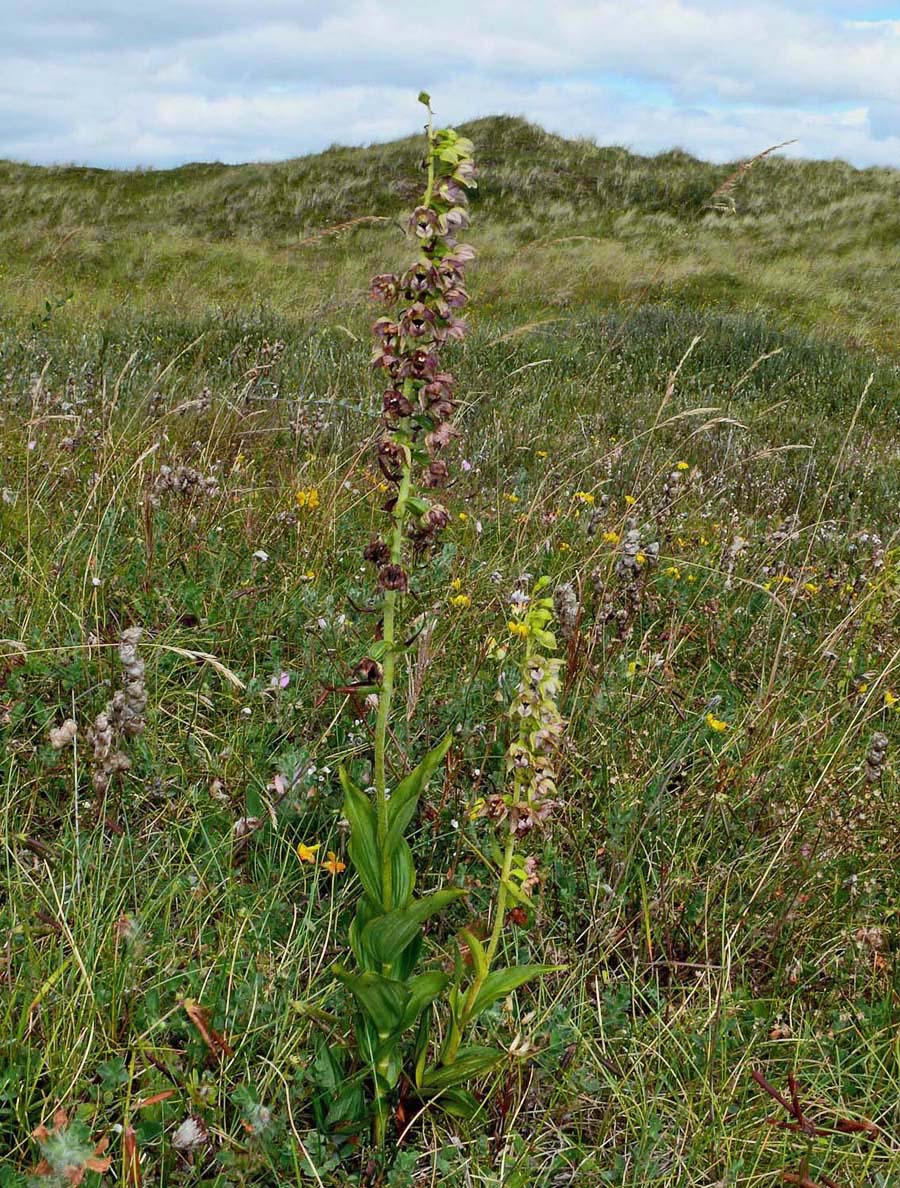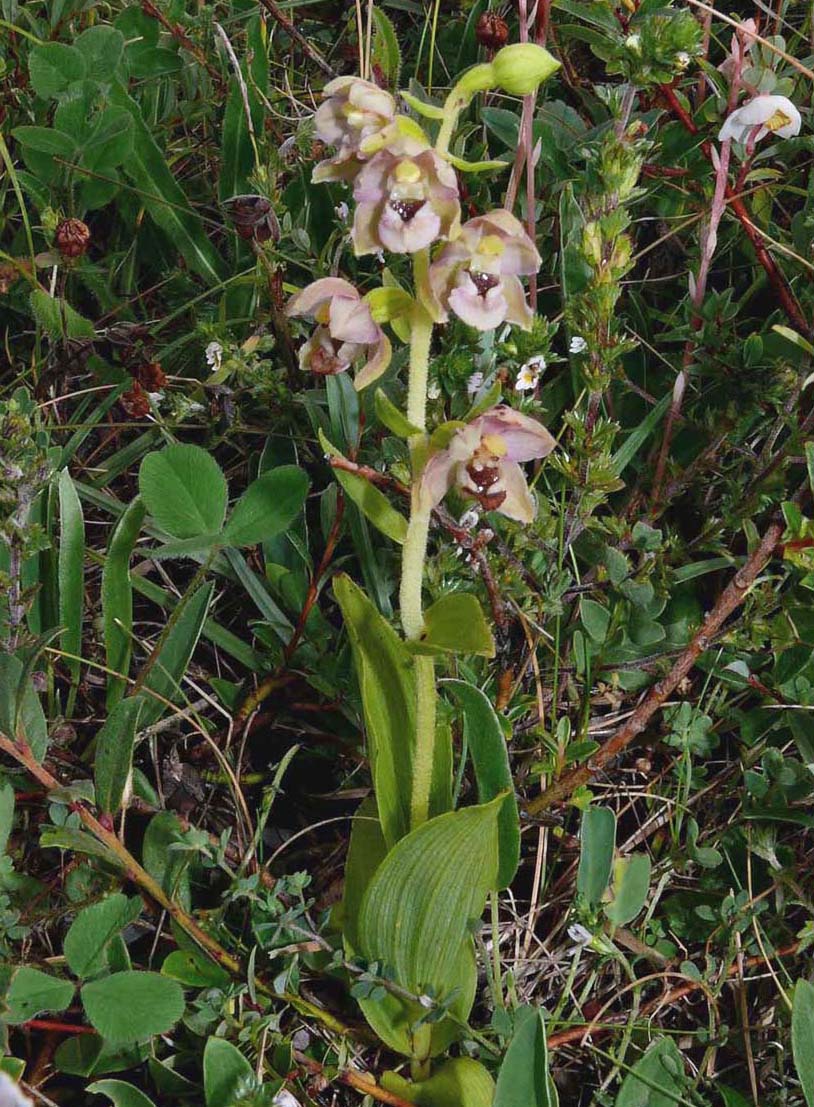E. neerlandica
was first described from Holland by Vermuelen in 1949 and its name
refers to this Dutch connection. The species was first ascribed the
name E. latifolia (helleborine) var neerlandica and there are those who believe this still to be the more correct nomenclature.
The species was originally thought to occur only on the continental side of the English Channel but recent studies by messrs Lewis, Clark and Spencer concluded that as had been suspected for some years, it was in fact present in the dunes at Kenfig and Margam in South Wales. This conclusion has not been accepted by all authorities and some prefer to regard the plants as ecotypes of E. helleborine. The Epipactis of this area have been closely studied and at the time of writing, confirmation of this orchids status is still awaited, as is the position of E. phyllanthes v cambrensis originally described in 1941, lost and then rediscovered.
E. neerlandica is an orchid of open sand dunes and can vary considerably. It can be differentiated from E. helleborine in four key ways:- 1. The leaves are crowded alternately at the bottom of the stem. 2.These leaves are upward pointing rather than held horizontally as in E. helleborine. 3. The stem is covered with soft hair. 4. The individual flowers comprising the inflorescence are often tightly packed. This is a sturdy species but interestingly, it has been noted that where E. neerlandica encroaches on more typical E. helleborine habitat (in shade), it becomes more lax and the differentiating characteristics outlined above become less obvious. It would seem that a plants position (light availability) in the dune system is influential. The pictures here come from Kenfig and the final photo depicts a small plant that was originally thought to be a form of the now defunct E. youngiana .
The species was originally thought to occur only on the continental side of the English Channel but recent studies by messrs Lewis, Clark and Spencer concluded that as had been suspected for some years, it was in fact present in the dunes at Kenfig and Margam in South Wales. This conclusion has not been accepted by all authorities and some prefer to regard the plants as ecotypes of E. helleborine. The Epipactis of this area have been closely studied and at the time of writing, confirmation of this orchids status is still awaited, as is the position of E. phyllanthes v cambrensis originally described in 1941, lost and then rediscovered.
E. neerlandica is an orchid of open sand dunes and can vary considerably. It can be differentiated from E. helleborine in four key ways:- 1. The leaves are crowded alternately at the bottom of the stem. 2.These leaves are upward pointing rather than held horizontally as in E. helleborine. 3. The stem is covered with soft hair. 4. The individual flowers comprising the inflorescence are often tightly packed. This is a sturdy species but interestingly, it has been noted that where E. neerlandica encroaches on more typical E. helleborine habitat (in shade), it becomes more lax and the differentiating characteristics outlined above become less obvious. It would seem that a plants position (light availability) in the dune system is influential. The pictures here come from Kenfig and the final photo depicts a small plant that was originally thought to be a form of the now defunct E. youngiana .
